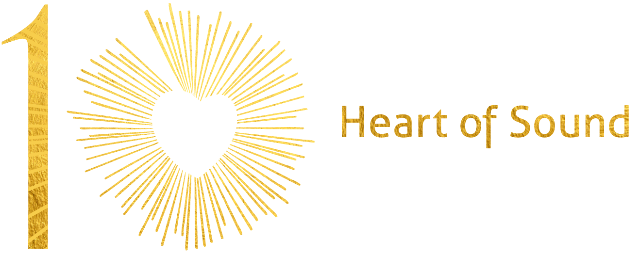Mantra Sound Bath: Top 10 Elements of Sound Healing with Mantra Meditation

For over a decade, when people ask me what I do, I’ve told them something like, “I teach mantra meditation and the yoga of sound and voice.” And people say, “Oh, like sound healing and sound baths and stuff?” And my response is always, “Sort of… let me explain…” and then I distinguish my niche as a sound yoga pioneer within the global yoga community, and the depth of my training and practice in the tradition of nāda yoga and Sanskrit mantra.
But the words sound healing and sound bath are (for better or worse) what stick in people’s minds and how they think of me. I guess they’re mainstream terms, and nada yoga is not! So instead of fighting that, I’m starting to develop a hybrid Mantra Sound Bath format and welcome Sound Healing Certification course online!
It's a pretty unique offering, to lead a Mantra Sound Bath format that:
1. Is richly textured with Indian musical sounds (tanpura, harmonium, bansuri, vocals)

2. Uses specific musical tones and patterns that create relaxing, uplifting moods conducive to healing (ragas from the nada yoga tradition)
3. Introduces mantra repetition as a mental device to organize thoughts positively and break ruminating loops around negative thought patterns.
4. Demonstrates simple Sanskrit mantra sounds to harness the mind’s power to establish consistent awareness, peace, and resilience.
5. Explains the sounds in a way that is totally non-religious, non-dogmatic.
My boyfriend is an atheist, so I explain things in a way that he can totally get the benefit of the sound-based practices with zero woo-woo, zero unnecessary fluff. I can put the cultural and religious elements into other contexts, right? (If I were doing a mantra sound bath at a yoga festival, I would share some of the bits that are relevant to me and my history from living in India amongst the yogīs and living deities, but for a broad audience, I don’t want to exclude anyone from any background from receiving the benefits of the sound healing.)
Here's the free mantra sound bath for you to try! (Be sure to subscribe to the channel; we offer different free sound healing & chanting experiences monthly!)
"I should do this mantra sound bath every day! It's hard for me to switch my mind off and fully relax.
This totally did it for me! I feel amazing and was really able to let stuff go.Thank you!" - Jodi, High School Teacher
6. Is trauma-informed and empowering the participant to feel what they feel and know what they know (without leading the witness into far-out visualizations)
7. Offers a spectrum of totally passive receiving to periods of more active participation, so participants can choose what they want to get out of it.
(As much as I get totally excited about training a room full of people to find their voice and lead them into a call-and-response chant experience with me (what you might also call a kirtan), and that’s a specialty I’ve cultivated over the past 15 years and developed a chant leadership teacher training around… the truth is A) A lot of people don’t feel comfortable singing, and B) Sometimes we all just need to lay there and receive.)
8. Incorporates a self-massage element, so participants can use their time laying down to also stretch and get some myofascial release with the help of massage balls or rollers if they wish.
9. Articulates the Sanskrit sounds in an accurate, reverent, embodied way.
It shouldn’t need to be listed as a bullet point, but SO MANY sound healers, sound bath leaders, and even sound healing trainers and certification programs butcher the mantras. I know butcher is a strong word, but trust me. It is brutal. And sadly, ubiquitous. I was doing the same for 13 years before someone told me. Now I know it only takes a few hours to learn how to hear/chant the 50 sounds of the Sanskrit alphabet, and a few months of practice tuning up one’s mantra repertoire. That’s why I created the Sacred Sanskrit Sounds course; it’s a non-judgmental space where former mantra butchers can learn to caress the sweet sounds with skill and devotion instead, keeping the mantra’s wholeness intact and vibrating the mantra’s full healing power and resonance.
10. Uses instruments that are tuned to one another and produce harmony. Any musical tension is, and is fleeting and intentional. Furthermore, it is framed within a healing context so participants can feel the movements of the sound energizing them in a satisfying way. Very much like the way certain moments during a deep massage hurt so good and then help us release into greater ease.
Again, this also shouldn’t need to be mentioned as a distinguishing factor, but SO MANY sound baths are led by people with no musical training. They may know all about solfeggio frequencies from an intellectual or theoretical point of view (i.e. XYZ Hertz is good for the liver) but I’ve been to quite a few sound healings where the gongs are dissonant to the bowls, and the leader sings on a note that creates spiky painful disharmony. Tolerating nails on a chalkboard should not be required of a sound bath participant! (Unless it’s titled “What Doesn’t Kill You Makes You Stronger: A Healing Sound Bath for Masochists’)
Would you like to try the free Mantra Sound Bath?
Here is the youtube live recording. Enjoy, and please get in touch with any feedback you have! :)



